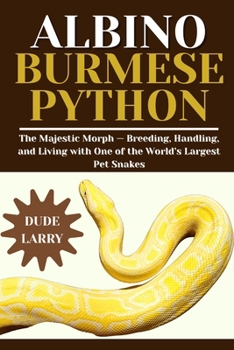Albino Burmese Python: The Majestic Morph - Breeding, Handling, and Living with One of the World's Largest Pet Snakes
Albinism in Burmese pythons (Python bivittatus) is not a random quirk-it is a precisely defined genetic mutation that disrupts normal pigmentation. To understand how the Albino Burmese Python came to be, we must begin at the molecular level.
Melanin and Pigmentation
In most reptiles, including Burmese pythons, body coloration results from a combination of pigments and reflective cells within their skin. One of the most important pigments is melanin-a dark-colored compound produced by specialized cells called melanocytes.
Melanin plays a major role in:
Creating the black and brown tones seen in wild-type Burmese pythons. Protecting the skin and eyes from ultraviolet (UV) light damage. Aiding camouflage in the wild through darker, earth-toned patterning. The Mutation: What Goes Wrong?
In albino Burmese pythons, a mutation in a key recessive gene-often in the tyrosinase enzyme gene (TYR)-leads to amelanism, or the complete absence of melanin. Tyrosinase is essential for the chemical process that produces melanin. When this enzyme is defective or absent, melanin cannot be synthesized.
Melanin and Pigmentation
In most reptiles, including Burmese pythons, body coloration results from a combination of pigments and reflective cells within their skin. One of the most important pigments is melanin-a dark-colored compound produced by specialized cells called melanocytes.
Melanin plays a major role in:
Creating the black and brown tones seen in wild-type Burmese pythons. Protecting the skin and eyes from ultraviolet (UV) light damage. Aiding camouflage in the wild through darker, earth-toned patterning. The Mutation: What Goes Wrong?
In albino Burmese pythons, a mutation in a key recessive gene-often in the tyrosinase enzyme gene (TYR)-leads to amelanism, or the complete absence of melanin. Tyrosinase is essential for the chemical process that produces melanin. When this enzyme is defective or absent, melanin cannot be synthesized.
Format:Paperback
Language:English
ISBN:B0FHH6XJ62
ISBN13:9798292062448
Release Date:July 2025
Publisher:Independently Published
Length:182 Pages
Weight:0.55 lbs.
Dimensions:0.4" x 6.0" x 9.0"
Customer Reviews
0 rating





